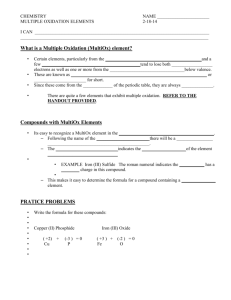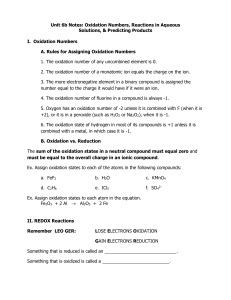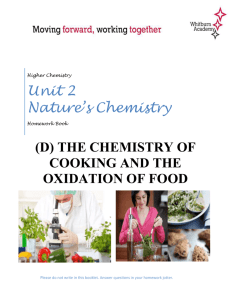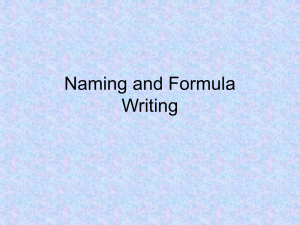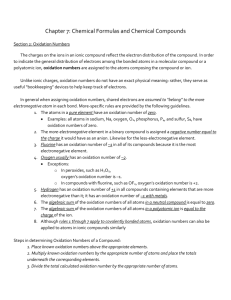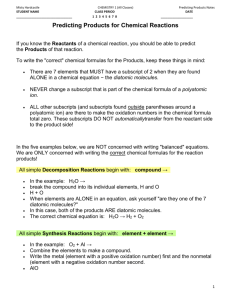Formulas and Names of Compounds
advertisement
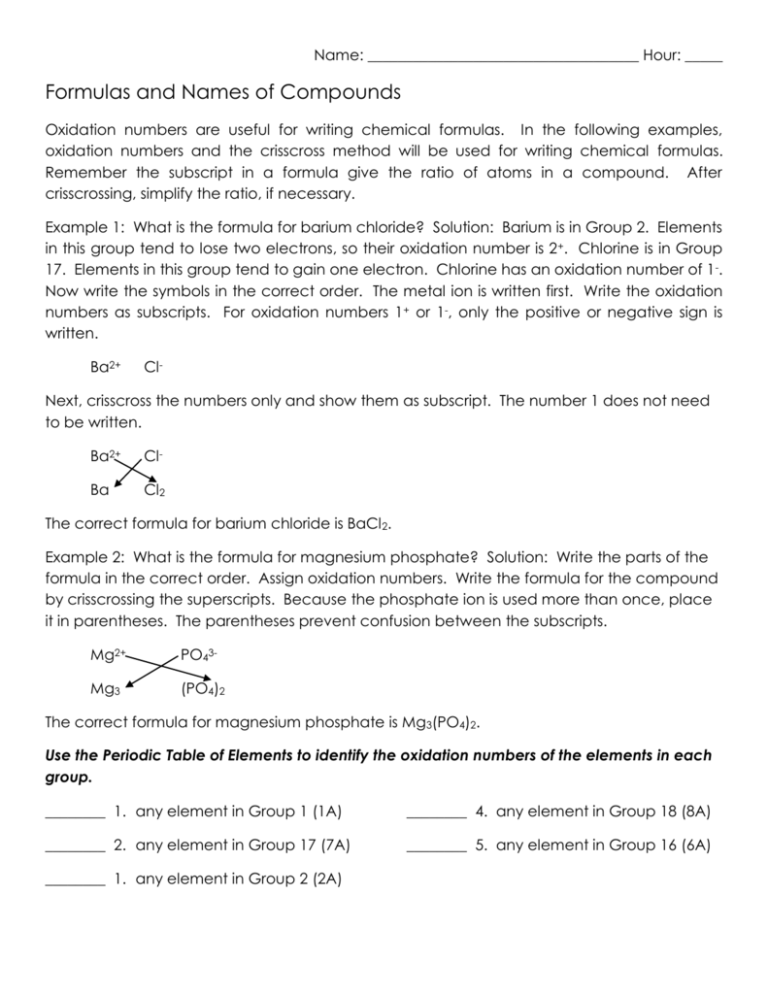
Name: ____________________________________ Hour: _____ Formulas and Names of Compounds Oxidation numbers are useful for writing chemical formulas. In the following examples, oxidation numbers and the crisscross method will be used for writing chemical formulas. Remember the subscript in a formula give the ratio of atoms in a compound. After crisscrossing, simplify the ratio, if necessary. Example 1: What is the formula for barium chloride? Solution: Barium is in Group 2. Elements in this group tend to lose two electrons, so their oxidation number is 2+. Chlorine is in Group 17. Elements in this group tend to gain one electron. Chlorine has an oxidation number of 1 -. Now write the symbols in the correct order. The metal ion is written first. Write the oxidation numbers as subscripts. For oxidation numbers 1+ or 1-, only the positive or negative sign is written. Ba2+ Cl- Next, crisscross the numbers only and show them as subscript. The number 1 does not need to be written. Ba2+ Cl- Ba Cl2 The correct formula for barium chloride is BaCl 2. Example 2: What is the formula for magnesium phosphate? Solution: Write the parts of the formula in the correct order. Assign oxidation numbers. Write the formula for the compound by crisscrossing the superscripts. Because the phosphate ion is used more than once, place it in parentheses. The parentheses prevent confusion between the subscripts. Mg2+ PO43- Mg3 (PO4)2 The correct formula for magnesium phosphate is Mg3(PO4)2. Use the Periodic Table of Elements to identify the oxidation numbers of the elements in each group. ________ 1. any element in Group 1 (1A) ________ 4. any element in Group 18 (8A) ________ 2. any element in Group 17 (7A) ________ 5. any element in Group 16 (6A) ________ 1. any element in Group 2 (2A) Answer the following questions in the space provided. Use the Periodic Table of Elements if needed. 1. What is the usual oxidation number of oxygen? ______________________________________ 2. What is the usual oxidation number of hydrogen? ____________________________________ 3. What name is given to many of the elements that have more than one oxidation number? ___________________________________________________________________________ 4. What is the sum of the oxidation numbers in a compound? ___________________________ 5. What is an oxidation number? _______________________________________________________ _____________________________________________________________________________________ _____________________________________________________________________________________ Use the crisscross method to write the chemical formulas for the compounds described below. 1. The compound ammonium selenate is used as a mothproofing agent. The selenate ion is written as SeO42-. What is the formula for this compound. 2. Titanium oxide is used as a white paint pigment. If titanium has an oxidation number of 4+ in this compound, what is this compounds formula? 3. Zinc iodide is used as an antiseptic. What is its formula? 4. Potassium chloride is used in fertilizer, photography, and as a salt substitute. What is its chemical formula? 5. Write the correct chemical formula for a compound containing barium and oxygen. What is the name of this compound? Write the formulas for the following compounds. Use the Periodic Table of Elements if needed. 1. Copper(II) sulfate ______________________ 2. Calcium chloride ______________________ 3. Iron(II) oxide ______________________ 4. Copper(I) oxide ______________________ 5. Sodium sulfide ______________________ Complete the following table by providing the name of the compound and the total number of atoms in each formula given. Formula NaCl NH4OH NH4Cl Ag2O K2SO4 Ca(NO3)2 Na2S Name Number of Atoms Sodium chloride 2
